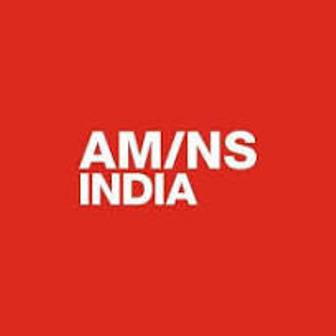ArcelorMittal Nippon Steel India targets a reduction in emissions intensity by 20% by 2030

By Our Correspondence
Mumbai, Feb 5: ArcelorMittal Nippon Steel India (AM/NS India) – a joint venture between ArcelorMittal and Nippon Steel, two of the world’s leading steelmakers – in its first Climate Action Report published today has outlined immediate actions to accelerate and decarbonise India’s development.
The report underscores a pivotal moment for the Indian steel sector as the country targets a $5 trillion economy and the third-largest global economy by 2026-27.
Aditya Mittal, Chairman of ArcelorMittal Nippon Steel India (AM/NS India), said:“As both our company and country expand, we are committed to address the challenge of decoupling development from emissions. Without a transformation in steel production, research indicates rising demand could lead to a 200% increase in sector emissions by 2050. Today, we announce that we are targeting a reduction in AM/NS India’s emission intensity by an additional 20%, with a roadmap for achieving net-zero emissions in the long term. AM/NS India presently has one of the lowest emissions intensities of integrated steel producers in India, having reduced its emissions intensity by one-third since 2015.”
Dilip Oommen, CEO of ArcelorMittal Nippon Steel India (AM/NS India), said,“With a clear pathway, both our parent companies, ArcelorMittal and Nippon Steel, have committed to becoming Net Zero by 2050. As AM/NS India enters the next growth phase, we seize this pivotal moment to articulate our near-term decarbonization strategy with specific commitments and actions across various fronts and timelines. Our report also outlines a roadmap to facilitate longer-term progress by offering clarity on key challenges for industry, government, and civil society to address collaboratively.”
Targeting 20% emissions intensity reduction this decade
The strategy charts AM/NS India’s immediate decarbonisation plan while fostering company growth by:
• Enhancing operational efficiency by increasing capacity utilisation, deploying energy recuperation wherever possible, scaling successful tests to inject gases that are cleaner than coal into production processes, incorporating newadvanced digitalisation technologies to ensure maximum fuel and material efficiency through improved data analytics, and more.
• Ramping up renewables to ensure a 100% green grid by 2030. ArcelorMittal has invested US$0.7 billion into new solar and wind farms which will be integrated with pumped hydro storage facilities owned by Greenko to deliver round-the-clock electricity to AM/NS India’s Hazira plant. By end of 2024, it will meet over 20% of flagship Hazira plant’s electricity needs, cutting AM/NS India’s carbon emissions by 1.5 million tonnes each year.
• Increasing scrap use in steelmaking to expedite decarbonization, AM/NS India aims to raise scrap utilization from 3-5% to ~10% by 2030. The company has also set out plans to establish several steel scrap processing centres across the country to encourage a circular economy for steel in India.
Alongside these actions, the company is focussed on designing the next phase of their blast furnace steel plants in a way that they have the space and capacity to quickly build lower carbon processes, such as hydrogen-based steelmaking, when they become available. This will ensure AM/NS India is not locked into a particular production process.
Investing in breakthroughs for net zero
AM/NS India also outlines strategic investments, pilots and partnerships necessary to produce net zero steel.
1. Green hydrogen: Green hydrogen presents the possibility ofnear-zero-emissions steel production. But given limited availability and competing demands, green hydrogen supply is restricted in India. To help change this, AM/NS India is:
i. Pursuing pilot programmes to further explore utilisation of low-carbon gasses at production processes.
ii. Developing long-term strategic collaborations with the world’s leadingenergy companies to assess hydrogen deployment and secure low carbon gas supply.
2. CCUS: Carbon capture is a key component for complete decarbonisation of the steel sector. To enable this breakthrough technology, AM/NS India is:
i. Collaborating with IIT Bombay to research CCUS potential in India’s geological environment;
ii. Actively exploring partnerships in the Hazira industrial belt to collaborate with research institutions and industrial companies to create local clusters, enhancing efficiency, speed, and scale in CCUS deployment.
AM/NS India is also supporting the ArcelorMittal funded‘XCarb India Accelerator Programme’ tosupport innovative ideas on clean technology from India. This programme, conducted in partnership with IIT Madras, is currently in the phase of identifying early-stage companies to assist in advancing their technologies and business models from lab to market.
Policy to accelerate progress
Given the task’s complexity and urgency, ambitious policy and regulations are crucial for creating the necessary conditions for progress. AM/NS India’s Climate Action Report recommends policy interventions in key areas, including:
1. Improving demand signals with clear procurement standards
2. Supporting infrastructure for low carbon economy
3. Tax incentives to encourage and boost green manufacturing
4. Increasing FDI with clear policy signals on low-carbon steel
5. Increasing R&D in hydrogenand reduce cost of hydrogen
6. Increasing availability of scrap
ABOUT ARCELORMITTAL NIPPON STEEL INDIA (AM/NS India):
ArcelorMittal Nippon Steel India (AM/NS India) is a joint venture between ArcelorMittal and Nippon Steel, two of the world’s leading steel manufacturing organisations. A leading integrated flat carbon steel producer in India, the company has a crude steel capacity of 9 million tonnes per annum with state-of-the-art downstream facilities. It produces a fully diversified range of flat steel products, including value-added steel, and has a pellet capacity of 20 million tonnes.





